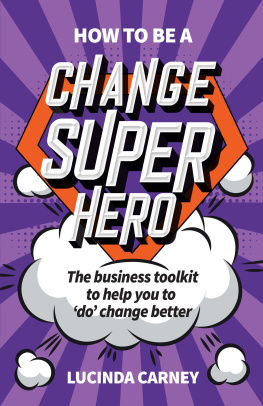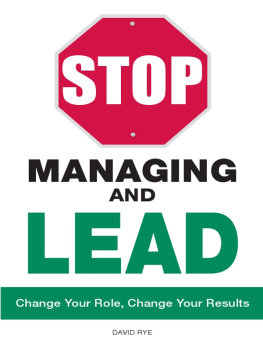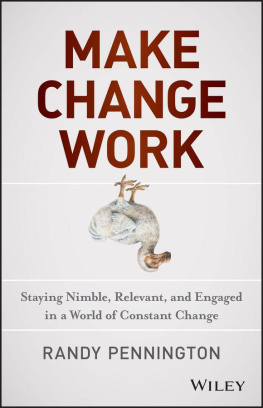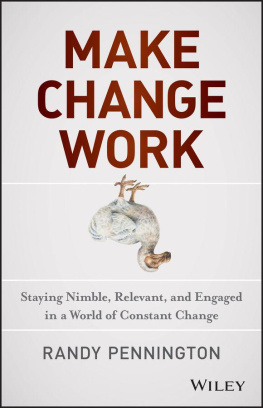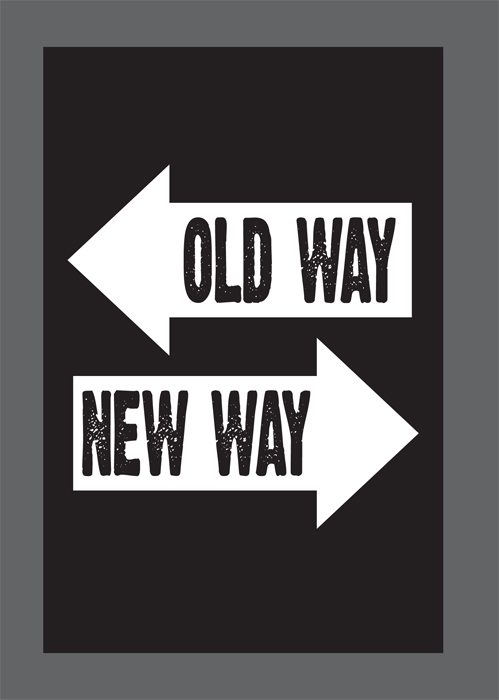Copyright 2015 by Mac Anderson and Tom Feltenstein
Cover and internal design 2015 by Sourcebooks, Inc.
Cover design by The Book Designers
Cover image stockphoto-graf/Shutterstock
Sourcebooks, the colophon, and Simple Truths are registered trademarks of Sourcebooks, Inc.
All rights reserved. No part of this book may be reproduced in any form or by any electronic or mechanical means including information storage and retrieval systemsexcept in the case of brief quotations embodied in critical articles or reviewswithout permission in writing from its publisher, Sourcebooks, Inc.
This publication is designed to provide accurate and authoritative information in regard to the subject matter covered. It is sold with the understanding that the publisher is not engaged in rendering legal, accounting, or other professional service. If legal advice or other expert assistance is required, the services of a competent professional person should be sought.From a Declaration of Principles Jointly Adopted by a Committee of the American Bar Association and a Committee of Publishers and Associations
All brand names and product names used in this book are trademarks, registered trademarks, or trade names of their respective holders. Sourcebooks, Inc., is not associated with any product or vendor in this book.
Photo Credits
Internals: page vii, Vector State; page 4, phipatbig/Shutterstock; page 8, Lynn Harker/Sourcebooks; page 12, 16, 22, 26, 30, Vector State; page 34, Lynn Harker/Sourcebooks; page 40, 52, 5657, Vector State; page 58, Lynn Harker/Sourcebooks; page 68, Vector State; page 72, phipatbig/Shutterstock; page 76, Alvaro Cabrera Jimenez/Shutterstock, Vector State; page 80, 84, Vector State; page 88, phipatbig/Shutterstock; page 92, Vector Stock; page 100, Alexandr III/Shutterstock
Published by Simple Truths, an imprint of Sourcebooks, Inc.
P.O. Box 4410, Naperville, Illinois 60567-4410
(630) 961-3900
Fax: (630) 961-2168
www.sourcebooks.com
Additional Simple Truths of Business
The Leadership Secrets of Santa Claus
Bulls-Eye
You Cant Send a Duck to Eagle School
CONTENTS
Introduction
Change is not easy. But it is simple. Things will always change. We dont have a choice about that, but we do have a choice on how we react to change; and as a leader whether or not we choose to create change. The choice really boils down to thiseither we manage change, or it will manage us.
As a leader, however, deciding to make changes is the easy part. Getting your people on board is much more difficult. Why is that? Quite simply, change is an emotional process. We are all creatures of habit who usually resist it and welcome routine. Uncharted waters are scary!
In the long run, however, sameness is the fast track to mediocrity. And mediocre companies wont survive. Tuli Kupferberg said it bestWhen patterns are broken, new worlds emerge. And that is your challengeto convince your team that the new world you are trying to create is better than the one youre in. Is it easy? Of course not. It takes planning, commitment, patience, and courage.
The truth, of course, is that change can be a wonderful gift. In fact, it is the key that unlocks the doors to growth and excitement in any organization. And, most importantly, without ityour competition will pass you by. A big part of success, as a leader, will be your ability to inspire your team to get out of their comfort zones; to assure them that even though they are on a new path, its the right path, for the right reasons.
Thats what this book is all aboutideas, to inspire, to motivate, and to encourage your team to move forward and to embrace change. Our goal is simpleto help you reach yours.
Mac Anderson
Founder, Simple Truths and Successories
Tom Feltenstein
CEO, Power Marketing Academy
Change What Needs ChangingNot Whats Easy
A few years ago, British Rail had a real falloff in business. Looking for marketing answers, they went searching for a new ad agencyone that could deliver an ad campaign that would bring their customers back.
When the British Rail executives went to the offices of a prominent London ad agency to discuss their needs, they were met by a very rude receptionist who insisted that they wait.
Finally, an unkempt person led them to a conference rooma dirty, scruffy room cluttered with plates of stale food. The executives were once again left to wait. A few agency people drifted in and out of the room, basically ignoring the executives who grew impatient by the minute. When the execs tried to ask what was going on, the agency people brushed them off and went about their work.
Eventually, the execs had enough. As they angrily started to get up, completely disgusted with the way theyd been treated, one of the agency people finally showed up.
Gentlemen, he said, your treatment here at our agency is not typical of how we treat our clientsin fact, weve gone out of our way to stage this meeting for you. Weve behaved this way to point out to you what its like to be a customer of British Rail. Your real problem isnt your advertising, its your people. We suggest you let us address your employee attitude problem before we attempt to change your advertising.
The British Rail executives were shockedbut the agency got the account! The agency had the remarkable conviction to point out the problem because it knew exactly what needed to change.
As Yogi Berra once said:
Before we build a better mousetrap, we need to find out if there are any mice out there.
If you dont like change, youre going to like irrelevance a lot less.
Tom Feltenstein
Re-Recruit Your Best People
As the old proverb goes, The journey of a thousand miles begins with a single step. Your first step in the change process should be to re-recruit your best people. That of course starts with the managers of each department. Although the culture of any company starts at the top, it is the managers who will make it or break it, especially in times of change. Their attitude, their commitment, and understanding of the change mission will be key to your success.
Dont make the mistake of assuming theyre on board, because it can be very costly and disruptive if you guess wrong. Even before the mission is clearly defined, bring them in, one on one, to get their input and their feedback. Get them involved in the planning process. But remember, there will be disagreements regarding your strategy and execution. And of course, thats where leadership comes into play.
In other words, if the manager disagrees with the final plan, you need to know up front. At this point, tough decisions must be made. Theyre either committed to the teams new plan going forward, or you need to find a new manager sooner rather than later.








